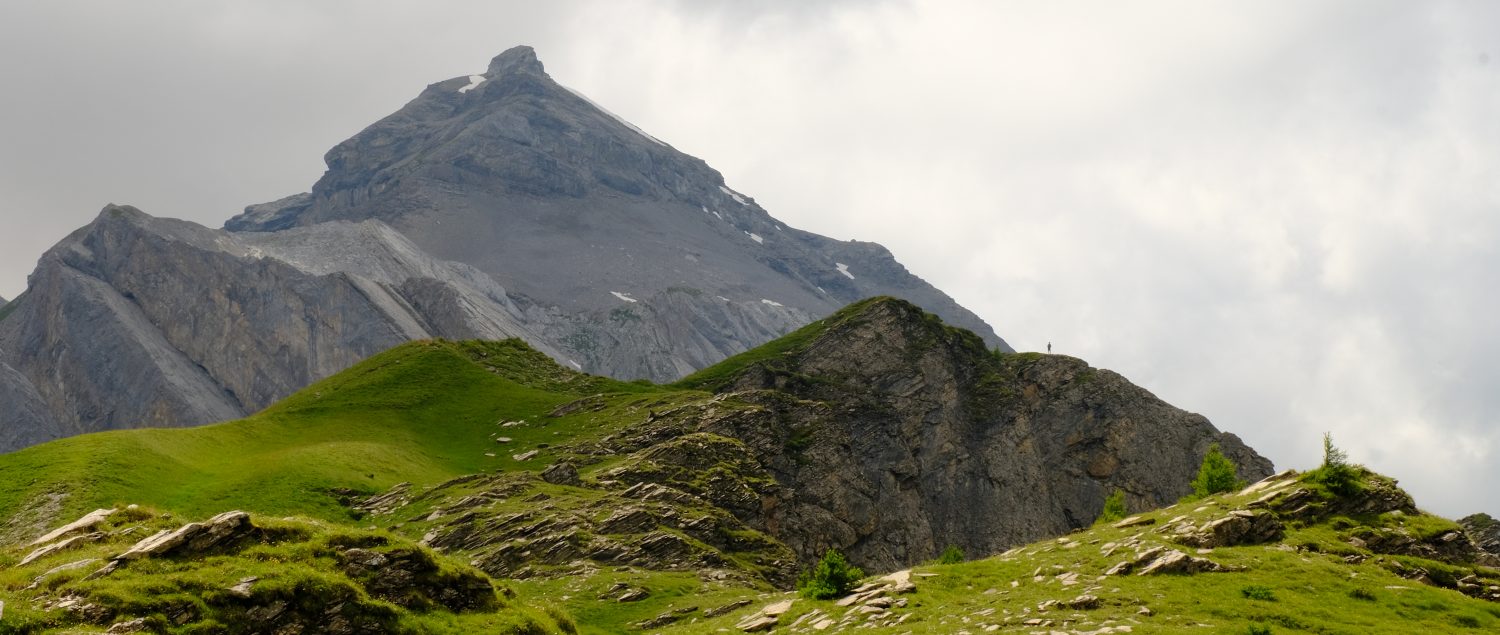A short circular walk starting from Paulerspury through Pury End and The Warren. Be there for the first signs of Spring. Wellies advisable, and snuffling in hedgerows obligatory!
Take nothing but pictures, leave nothing but footprints.
From the War memorial in front of St. James the Great Church, Paulerspury walk away from the church, keeping the small green on your left. Turn Right down Park Lane. After passing the houses continue ahead on the private drive, which is also a public footpath. You will see a small, private wood on your Right, behind the dog poo bin. The violets can be seen from the path you are on.
Edge of private woodland beside Park Lane – Sweet Violet
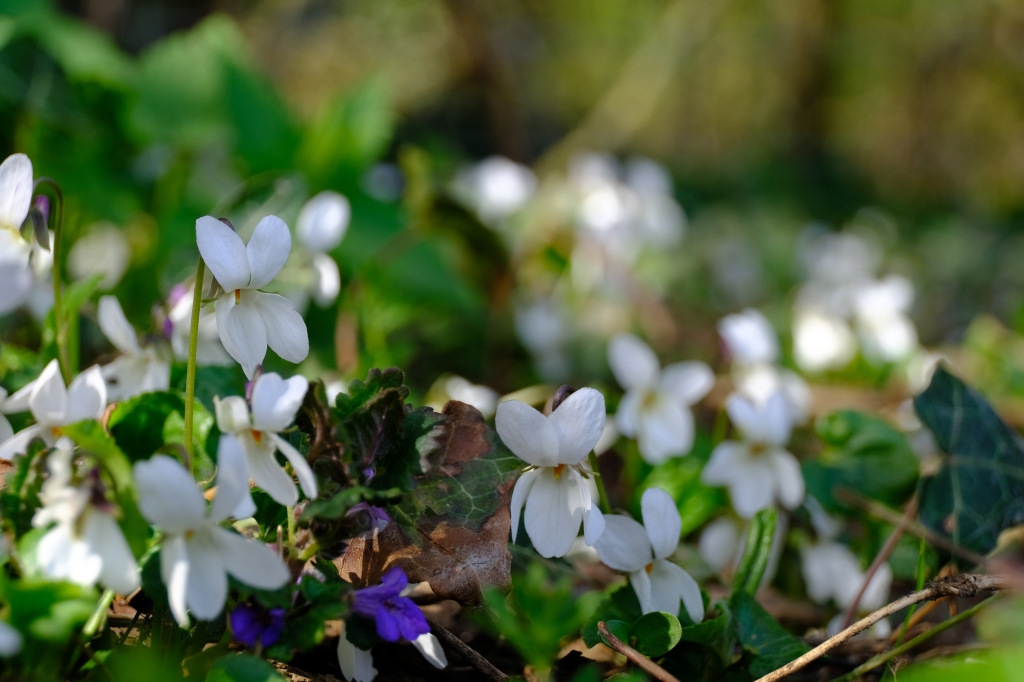
Photo credit: Sally Woodbridge
Sweet Violets have a distinctive perfume. In the Late Victorian period toiletries made from these violets were very popular. Sweet violets can be white or purple.
Continue along Park Lane then turn Right when the drive ends at a metal fence and descend with hedgerow on your Left. At the bottom of the fields turn Right towards Pury End. Cross the little stream on a wooden bridge and when you reach the village road turn Right along Lower Street.
Under the hedgerows – Lords & Ladies, Dog’s Mercury and Common Nettle
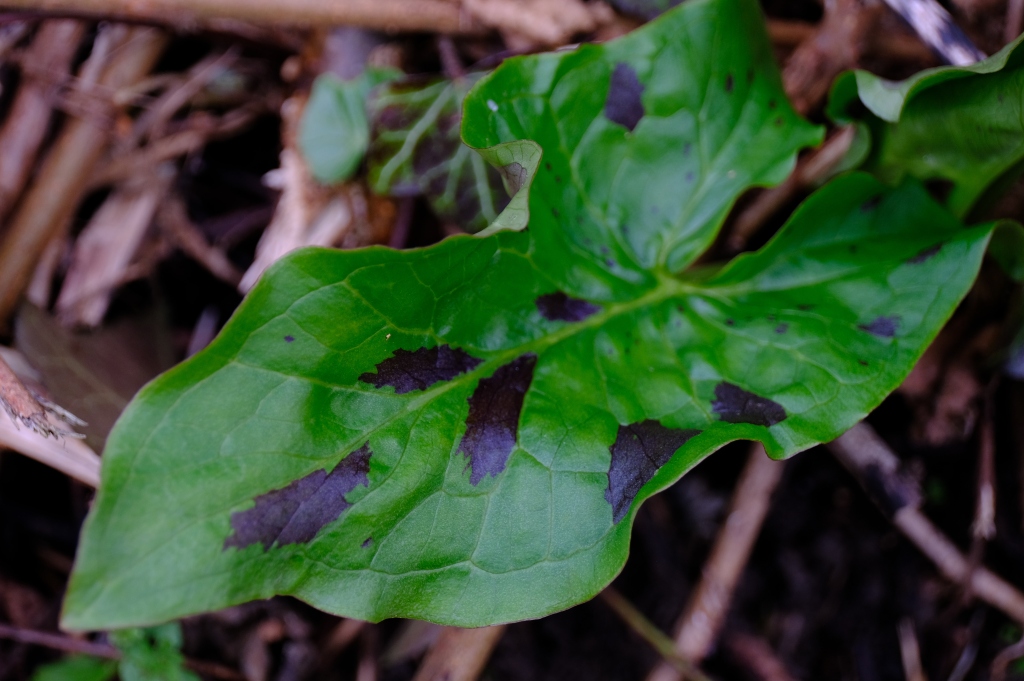
Photo credit: Sally Woodbridge
Watch out, this one is poisonous! As this grows a purple or yellow fleshy spike appears centrally, initially wrapped in green leaves. The tiny flowers on it turn to red berries. As you can imagine it has a lot of, rather rude, common names.
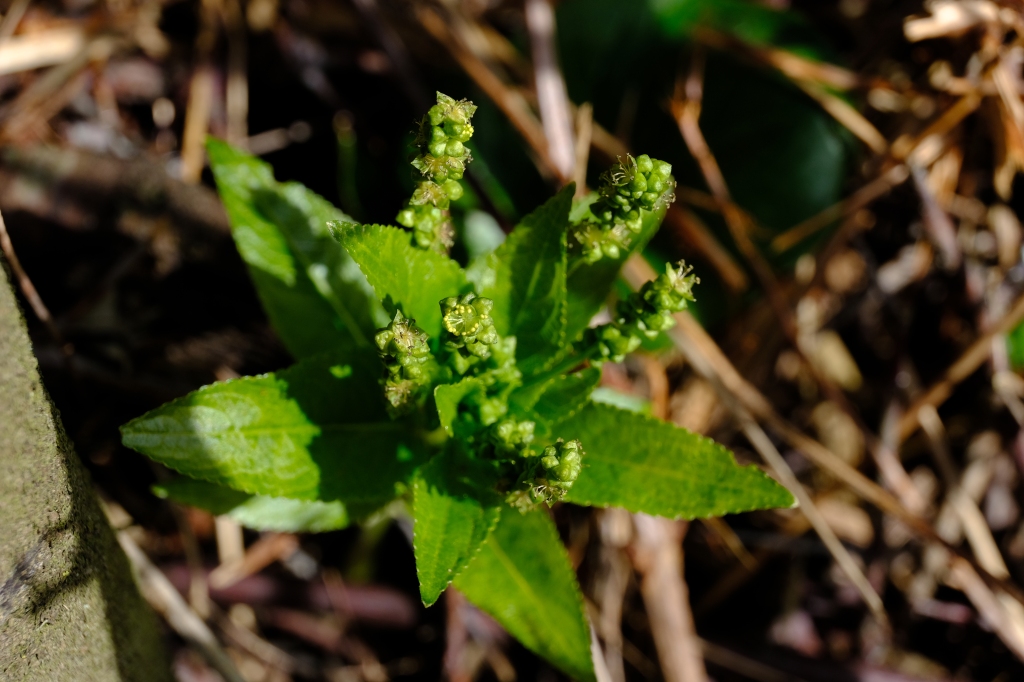
Photo credit: Sally Woodbridge
Dog’s mercury is also highly poisonous, one whiff of its foetid odour will put you off. It is dioecious, meaning each plant is either male or female.
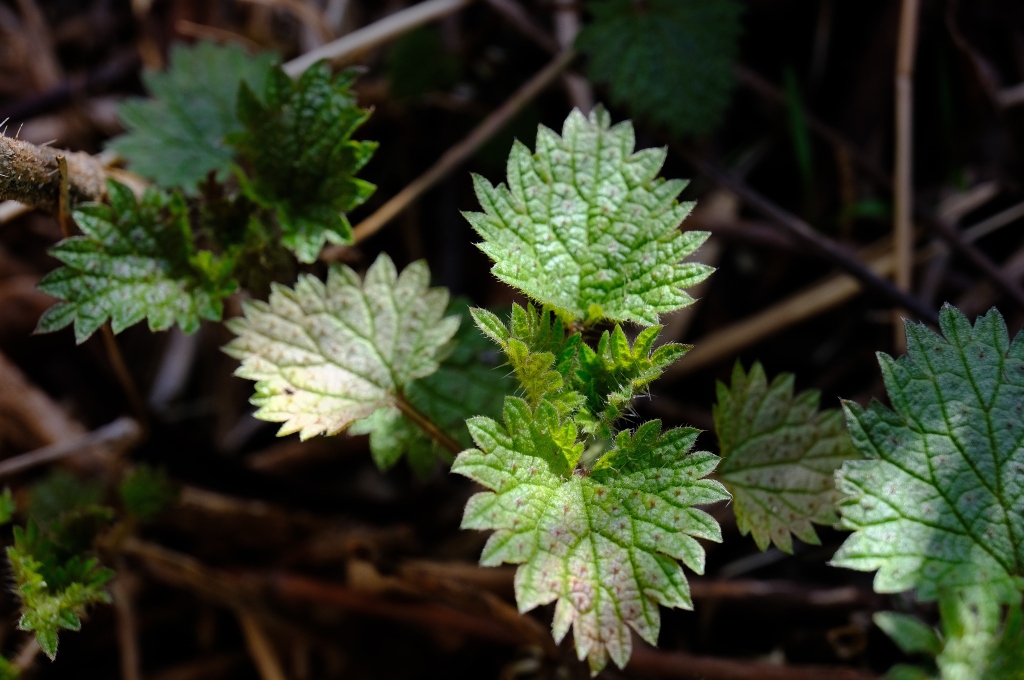
Photo credit: Sally Woodbridge
Look really closely to see the spikes and you’ll see why this is also called the stinging nettle, ouch! The caterpillars of Small Tortoiseshell (Aglais urticae) and Peacock (Aglais io) butterflies love them though, so we should too!
Walk past Scriveners Lane on your Left and start looking on the banks on your left for Lesser Celandines. Once you’ve found them, retrace your steps to the bottom of Scriveners Lane and go through the gate into the field opposite.
Lower Street, Pury End – Lesser Celandine
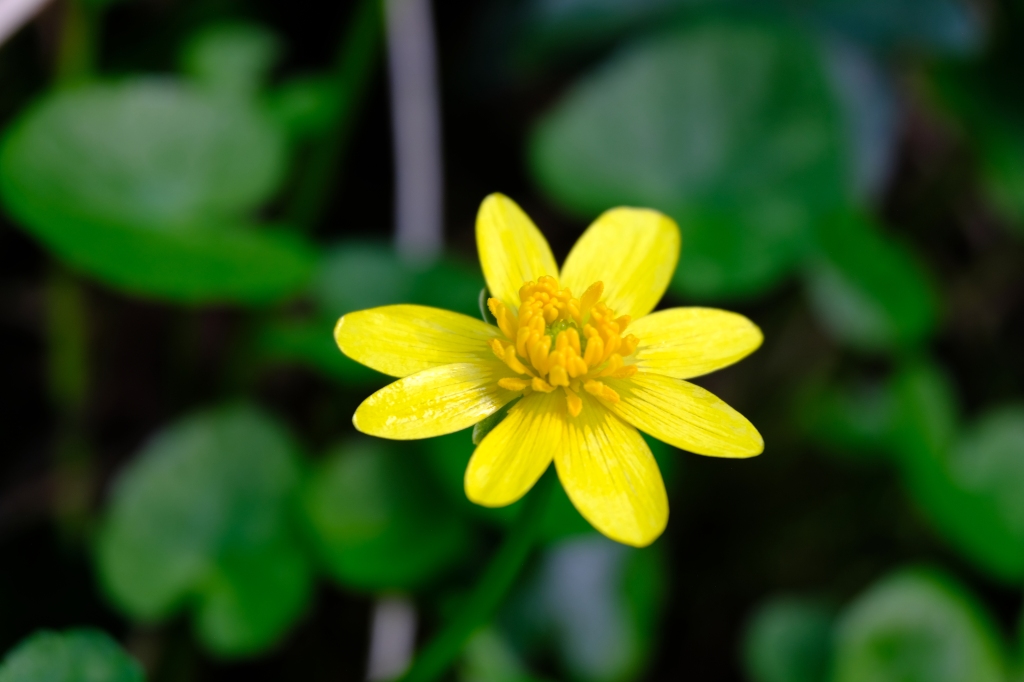
Photo credit: Sally Woodbridge
Lesser Celandines are nyctinastic. The flowers are open during the daytime but close up in the evening or during dull weather. This could stop predators such as slugs and roe deer from eating them. They are also known as pilewort, you can guess which medical ailment they were used to treat.
Descend down this field, heading towards the church ahead of you. Cross the stream and walk up the next field still heading for the church. Keep the church on your Right and turn Right into the churchyard. Keep straight ahead for the War memorial.
Churchyard of St James the Great, Paulerspury – Red Deadnettle
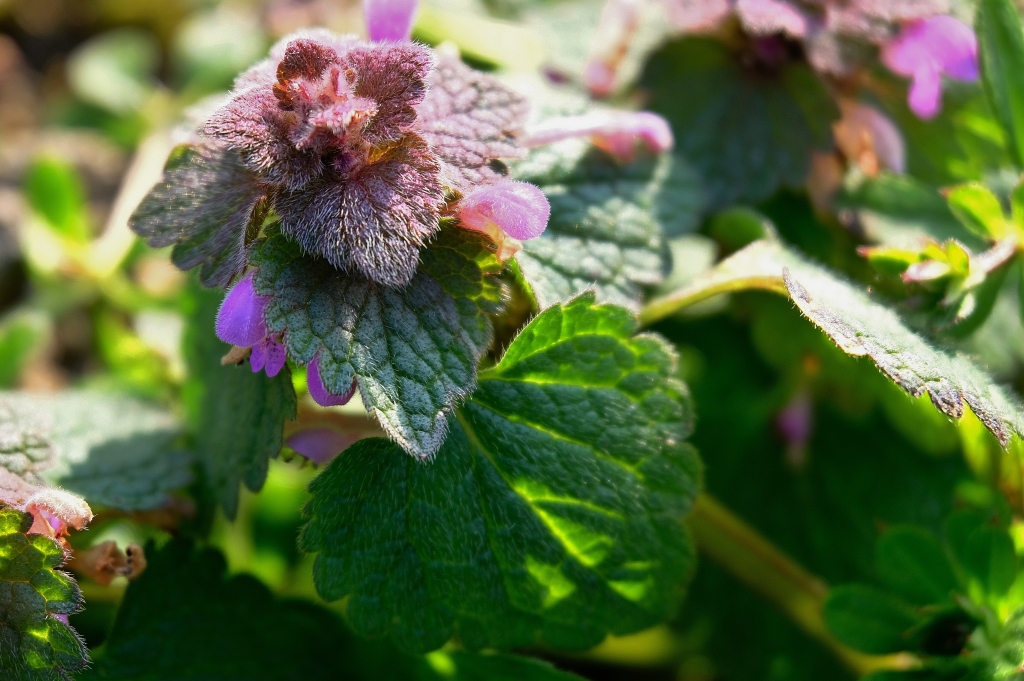
Photo credit: Sally Woodbridge
These nettles don’t sting. The nectar deep in the pink flowers is a welcome early source of food for insects with long tongues such as bumblebees and the common, gingery, solitary Red Mason Bee (Osmia rufa).
References
R. Fitter, A. Fitter and M. Blamey, Wild flowers of Britain and Northern Europe, 5th ed., Harpercollins Publishers, London, 1996.
ispotnature.org
Wildlifetrusts.org
BBC winter watchlist 2022 https://www.bbc.co.uk/programmes/articles/3xVYVWXqHRFRpLMlh5M3wDc/winter-watchlist-2022
If you enjoyed this please enter your email address below to follow this blog and receive notifications of new posts by email.

